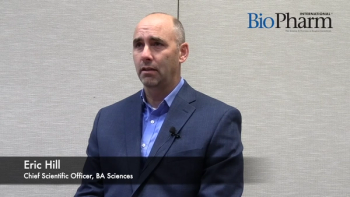
- BioPharm International-08-01-2020
- Volume 33
- Issue 8
Predicting Extractables and Leachables from Container Stoppers
Data from migration kinetics studies can be used to develop models that predict levels of leachables and extractables at different temperatures and time points.
A controlled extraction study early in the pharmaceutical development process can provide an understanding of potential leachables from appropriate drug product container/closure system components, manufacturing process components, and/or product administration components.
While a controlled-extraction study provides the worst-case possible leachables and amounts, it cannot fully predict the presence of specific leachables and their amounts. A simulation or forced migration study is commonly used to predict more realistic leachables profile and amounts.
A fundamental question for any simulation or forced migration study is what the optimum temperature and duration should be in order to predict the amount of leachables that would be released by the end of the product’s shelf life, or at other specific points.
The authors designed a forced migration study to address that question and determine how the amount of leachables would change with intended temperature changes at multiple time points required for drug product stability studies and at the end of the drug’s shelf life.
The research also explored whether the level of leachables could be predicted using data that had been generated at previous time points.
About the Authors
Benton Cartledge is associate research scientist; Jason Carmichael is assistant scientist; Nathan Haag is a scientist; Eric Hansen is a scientist; Travis Lato is an assistant scientist; Xiaochun Yu is a senior principal scientist; all with PPD Laboratories, 8551 Research Way, Suite 90, Middleton, WI 53562.
Article Details
BioPharm International
Vol. 33, No. 8
August 2020
Pages: 40-44
Citation
When referring to this article, please cite it as B. Cartledge, et al., “Predicting Extractables and Leachables from Container Stoppers,” BioPharm International33 (8) 2020.
Articles in this issue
over 5 years ago
Chromatographic Science Clarifies Separation Challengesover 5 years ago
The Impact of SARS-CoV-2 on Biomanufacturing Operationsover 5 years ago
Formulating an ADC Development Solutionover 5 years ago
Using Process Modeling to Troubleshoot a Bioprocessover 5 years ago
Points to Consider for Continuous Downstream Bioprocessingover 5 years ago
CDMOs Build Fill/Finish Capacity for COVID-19 Vaccinesover 5 years ago
Aseptic Processing Practices: Reviewing Three Decades of Changeover 5 years ago
Regulating Raw Materials Testingover 5 years ago
It’s Time to Listen to ScienceNewsletter
Stay at the forefront of biopharmaceutical innovation—subscribe to BioPharm International for expert insights on drug development, manufacturing, compliance, and more.




